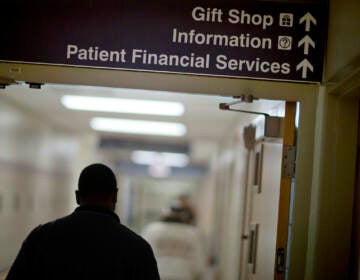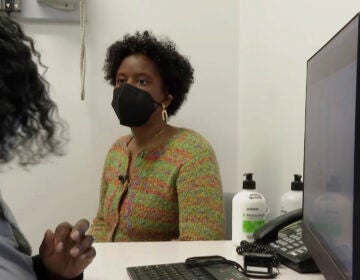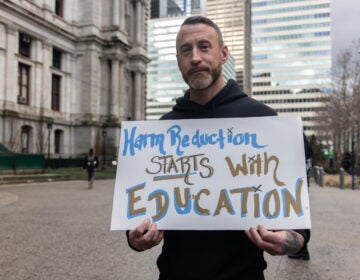Yelp reviews may provide key insights into patient experiences with racism
With no standardized survey available to measure patient experiences with racism, some researchers are turning to Yelp to do the work.

Emergency room sign. (Blake Farmer/WPLN)
For years, hospitals and health systems have lacked an effective way to measure patient experiences with racism on the local level.
The most widely used survey to document feedback from patients was created by the Center for Medicare and Medicaid Services. It’s called the Hospital Consumer Assessment of Healthcare Providers and Systems (HCAHPS), the first national, standardized, publicly reported survey of patients’ perspectives of hospital care. Still, experts say encounters with racism in the health care setting typically require opportunities for open-ended responses, which this survey lacks.
Dr. Jason Tong, a general surgery resident and National Clinician Scholar at the University of Pennsylvania’s Perelman School of Medicine, says racial disparities are a complex phenomenon present in all domains of health care. And the difficulty in measuring interpersonal racism at the local level limits health systems’ ability to improve patient experiences within health care.
New research, however, shows that consumer reviews on public forums may yield some promise. In 2021, Tong and fellow researchers turned to Yelp and analyzed 90,786 reviews of hospitals across the country published between 2010 and 2020, to better understand how patients perceive and report racism. Of all reviews obtained, 260 explicitly cited racism in 190 hospitals spread across 33 states.
Among these, 179 reviews cited individual perpetrators of interpersonal racism, of which physicians and nurses were mentioned most. Interpersonal racism was associated with recurring themes, including disrespect, unprofessionalism, and incompetence.
“Consumer reviews are incredibly powerful,” said Tong, who was the lead author of the study. “They’re familiar, [and] they’re a source of data that the everyday consumer off the street is turning to more and more often these days.”
Tong said emerging research has even demonstrated that low-income patients and patients of color rely more on social media and consumer reviews to report racism because they are familiar platforms not associated with the mistrust and stigma of health care systems.
Anietie Andy is a senior data scientist at the Penn Medicine Center for Digital Health. He said one of the bigger discoveries that came out of this study was that episodes of racism were bidirectional, meaning they flow both ways between patients and hospital employees. According to the study, nine reviews demonstrated internalized racist behavior by the consumer, primarily directed at nurses.
And while racist encounters were 2 ½ times more frequently associated with clinical encounters, Andy said racism within nonclinical spaces also occurred, and were most common during interactions with receptionists and security guards. Furthermore, Tong said, this study shows that applying qualitative methods to publicly available consumer reviews can reveal information on experiences of interpersonal racism within health care that isn’t available in any other metric currently.
Tong and fellow researchers have a strong interest in trying to understand drivers of racial disparities within health care.
“But in particular, we’re interested in how individuals choose their health care providers,” said Tong. “ [For example], despite the presence of a higher-quality hospital closer to [Black patients], Black patients are more likely to go to a lower-quality hospital that’s even further from their home.”
Tong wants to understand what might be driving that kind of decision, and whether racist experiences with clinicians and hospital staff might be a factor.
In the future, Tong and Andy hope to expand this study of discrimination beyond racism and study other topics, including patient experiences across gender, age, and socioeconomic status. Tong also wants to look at how these subjective experiences of discrimination exist in relation to objective clinical outcomes like mortality rates or hospital readmission rates.
“Racism within health care can be pervasive and can occur in a variety of both clinical and nonclinical spaces,” said Tong. “Hopefully [we] can create a composite metric of racism that can be used for targeted quality improvement initiatives for hospitals.”
 WHYY is one of over 20 news organizations producing Broke in Philly, a collaborative reporting project on solutions to poverty and the city’s push towards economic justice. Follow us at @BrokeInPhilly.
WHYY is one of over 20 news organizations producing Broke in Philly, a collaborative reporting project on solutions to poverty and the city’s push towards economic justice. Follow us at @BrokeInPhilly.

Get daily updates from WHYY News!
WHYY is your source for fact-based, in-depth journalism and information. As a nonprofit organization, we rely on financial support from readers like you. Please give today.








